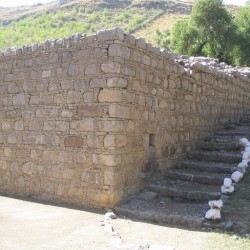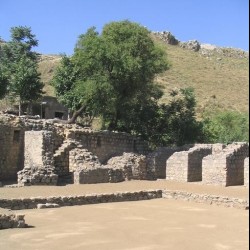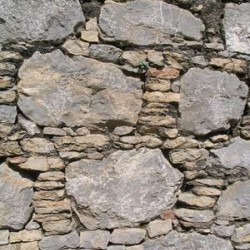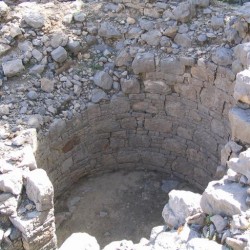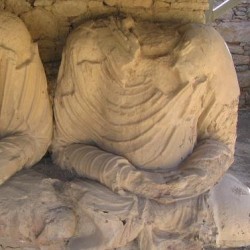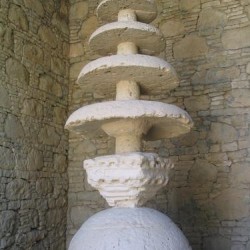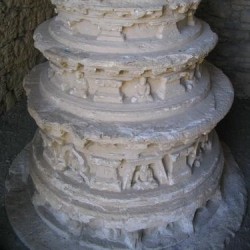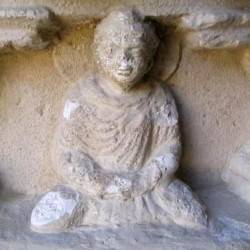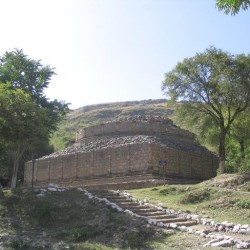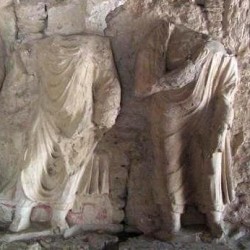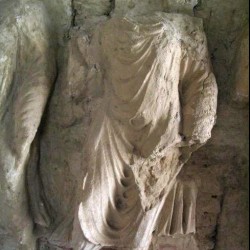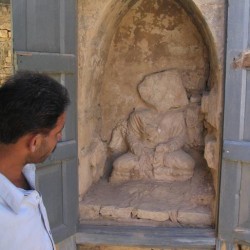Taxila, Mohra Moradu
Q82074179Taxila (Old Indian Takshaçila, Greek Ταξίλα): the ancient capital of the eastern Punjab, the country between the rivers Indus and Hydaspes. The site consists of several parts, which belong to the Achaemenid, Greek, and Kushan periods.
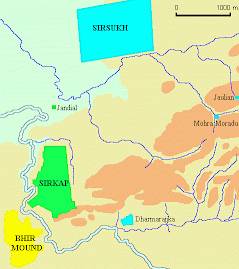
Mohra Moradu is a Buddhist complex, consisting of two parts: in the west, a stupa (venerated tomb), and in the east, a monastery. The latter is situated between two hill spurs. The monks could meditate and study in all quietness, a kilometer-and-a-half away from the noise of the city at Taxila-Sirsukh; yet, they were close enough to the town to beg for alms.
The monastery was built in the second century and extensively renovated in the fifth century.
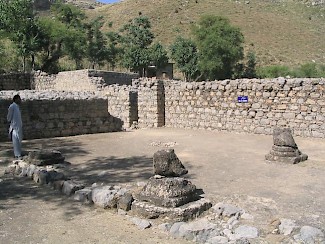
Monasteries in Gandara and the Punjab usually had 27 cells with plastered walls. In some of them, the stupas of venerated teachers or monks can still be seen. One of them is four meters high and was painted; traces of yellow, crimson and blue are still visible.
The cells surrounded a rectangular central court with a bathroom (jantâghara), an assembly hall (upasthâna-sâlâ) with plastered and painted walls, a well, a store-room (koshthaka), a kitchen (agni-sâlâ), a refectory (upâhâra-sâlâ), and a latrine (varchah-kutî).
The walls were heavy. and suggests that there was not only a second, but perhaps also a third floor. There store-room's walls were so strong, that it has been assumed that there was a tower on top of it.
Not far from the monastery was a very large stupa. It is shown on the third row below. The lower part of this lofty monument is about five meters high and decorated with plaster, pilasters, and stucco figures of Buddhas and demons. Parts of the decoration have survived. The way the cloaks are represented and the typical asymmetrical pose look almost Greek or Roman, but this sculpture was made well after the direct political contacts between the Mediterranean and Punjab had ceased to be important.
Like Sirsukh, the similar-looking monastery Jaulian, and the other Buddhist complexes at Taxila, Mohra Moradu was left when the White Huns invaded the Punjab in c. 500 CE.
